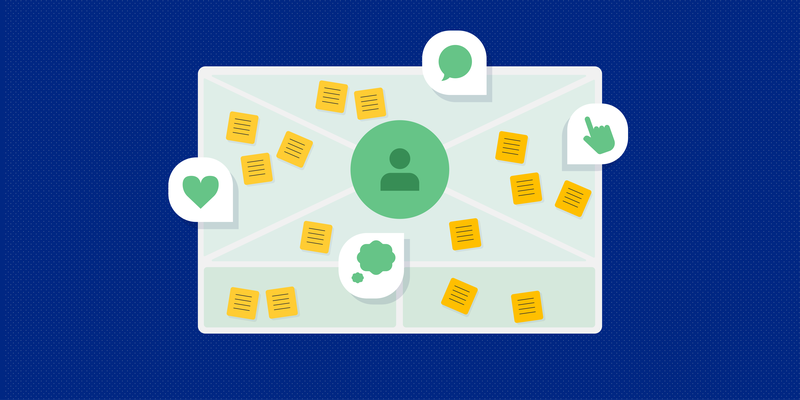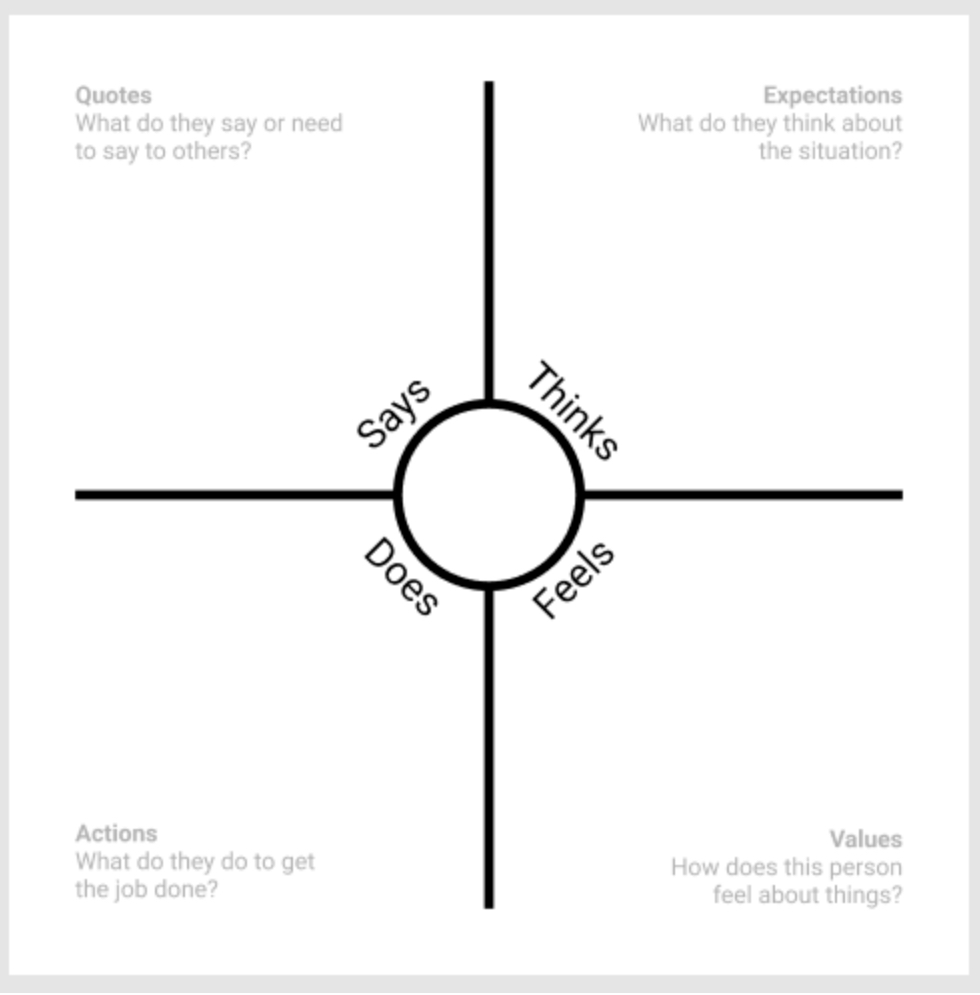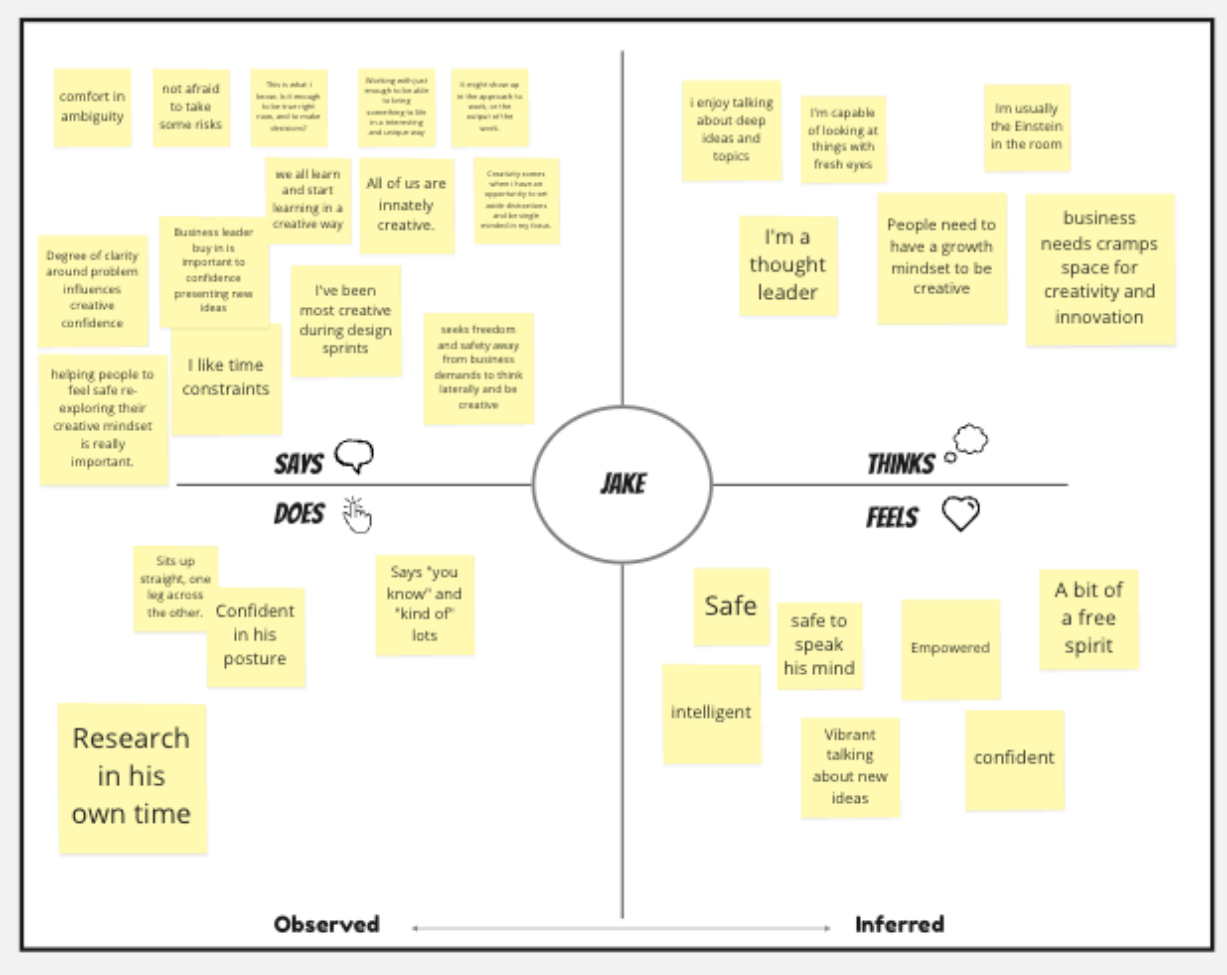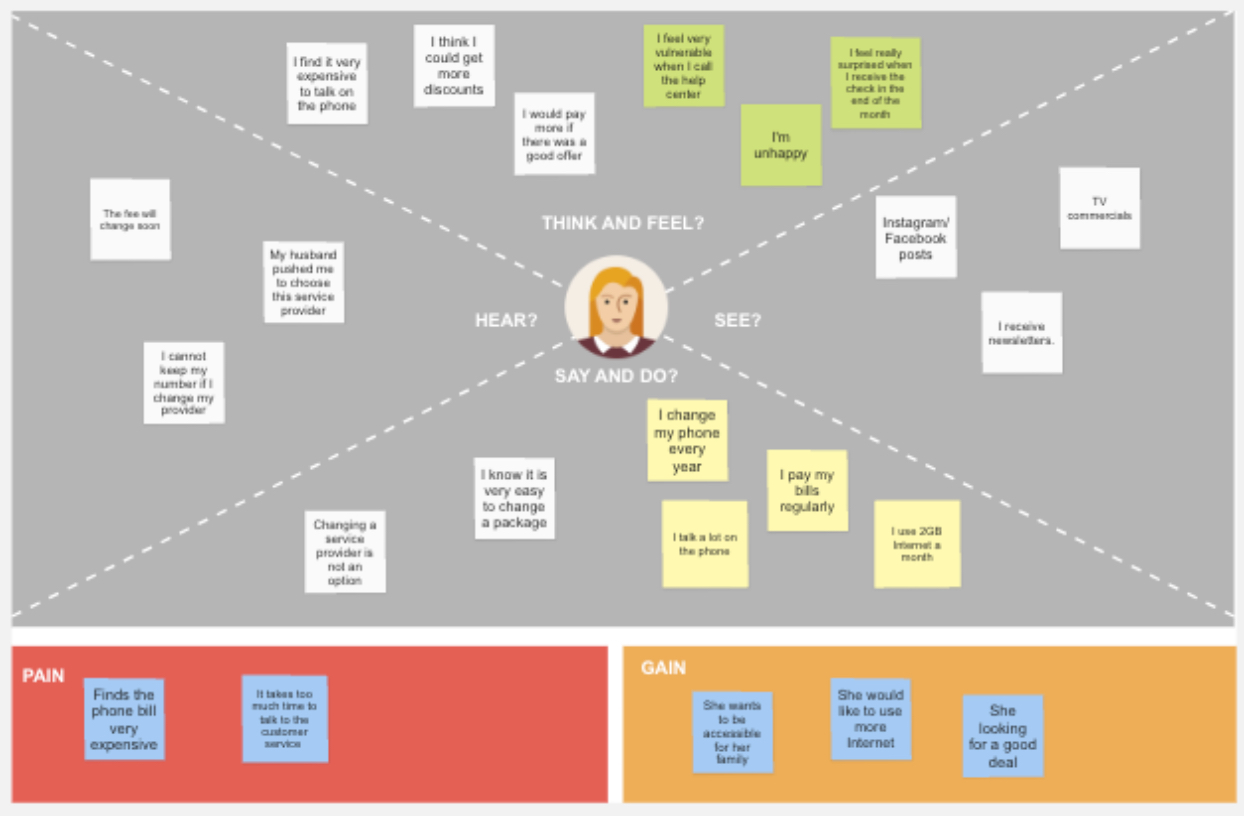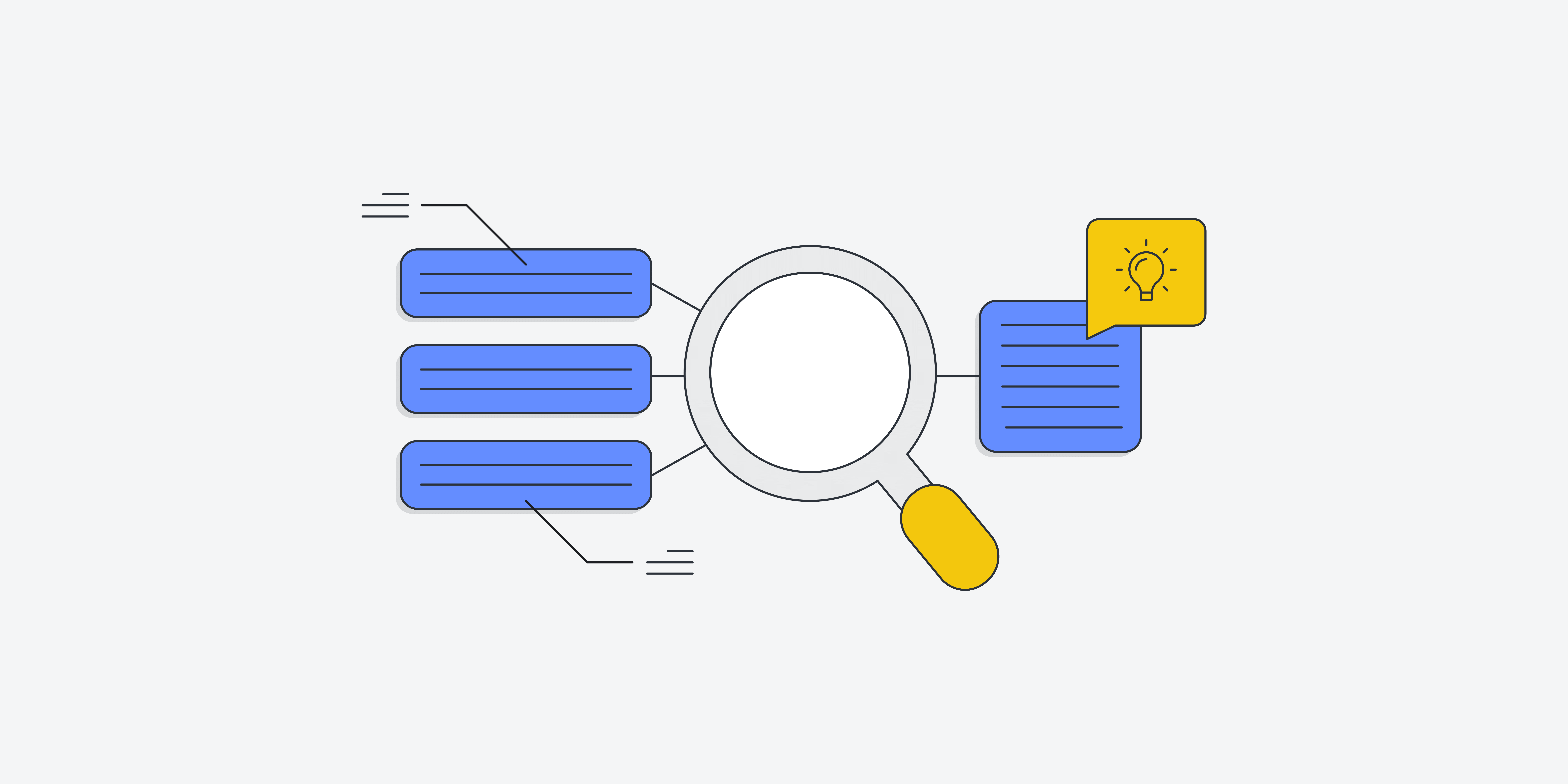One of the most important traits you can have as a user experience (UX) designer is empathy for the user. The goal of a UX designer is to create frictionless, user-friendly designs for your users and, to do this, you must have empathy for them, including what they think, feel, say, and do when they interact with your website, app, or other product. UX designers also need to help colleagues and stakeholders understand these things.
This is where empathy maps come in. Empathy maps are a powerful tool for understanding your users and passing that understanding on to others.
This post will tell you all you need to know about empathy mapping. You’ll learn what an empathy map is, peruse a step-by-step guide to creating one, and understand the difference between empathy maps, journey maps, and personas.
Let’s get started!
What is an empathy map?
An empathy map is a tool that visualises our understanding of users’ needs. Developed by Dave Gray the founder of Xplaner, the map can specify one user or several users in aggregate that said and did similar things. When you conduct user research, you learn many things about your users. An empathy map helps you visualise and present that data.
Empathy map examples: To illustrate empathy mapping, here are some templates:
Empathy map template by Dimitrie, created with Figma
The above empathy map puts the user’s name or photo in the circle in the centre and surrounds them with four quadrants. The four quadrants relate to what the user says, does, thinks, and feels.
Says and Does
These quadrants are about what you can observe directly. You’ll write down anything the user says out loud and any actions the user takes during qualitative research.
Thinks and Feels
These quadrants are about what you infer from the user. The “Thinks” quadrant captures what the user is thinking about throughout their experience with your product but may not be willing to vocalise. You can also try to understand why they’re unwilling to share their thoughts — are they self-conscious, too polite, unsure of themselves, etc? For example, you might write “This is frustrating” or “I don’t get this tab.”
The “Feels” quadrant captures the user’s emotional state as they go through your product. You’ll answer: what are they feeling and why? You’ll write down the feeling followed by a reason for it. For example, “nervous: not sure of what they’re doing” or “triumphant: successfully got to the right page.”
Empathy map template by Jeshua MacDonald, created with Miro
Above is an empathy map in use about the user Jake. This has all four quadrants complete.
The above empathy map is a bit more advanced. In addition to the say, do, think, and feel quadrants, it also has room for hear and see quadrants, and at the bottom pain and gain areas.
See and Hear
The user doesn’t come to our products in a vacuum and the see and hear quadrants speak to this. In the “See” quadrant, you’ll record whatever the user tells you about their daily experience, including what they’re watching, reading, and exposed to on a regular basis. In the “Hear” quadrant you’ll include whatever is said by family, friends, co-workers, and the media that is influencing their thinking.
Pain and Gain
These areas speak to the positives and negatives of the user’s experience. “Gains” are about what their goals are and what they may aspire to; “Pains” are about what obstacles and frustrations stand in their way.
Areas of the map can contain similar statements. It’s normal to see this kind of juxtaposition between quadrants. Alternatively, there may be inconsistencies between, for example, what the user does and says. Don’t censor what you write. Instead, use the map to better understand the complexities of the user.
Why create empathy maps?
We create empathy maps for several purposes. Here are a few instances where this exercise can be especially helpful.
Understand Users
First and foremost, empathy maps help us understand users’ needs and cultivate empathy for the target audience. We see the complexity of the user all in one place so we can find solutions specifically tailored to them.
Educate Colleagues and Stakeholders
Empathy maps help us share what our users think, feel, see, and do with teammates and clients. This should also protect them from unfounded assumptions or biases throughout the design process.
Make Sense of Qualitative Data
Empathy maps make sense of qualitative data by collecting and categorising survey answers, interview notes, etc. It will also help you uncover if more research needs to be done; a barely covered empathy map means you need to do more research to get to know your users.
When does empathy mapping take place?
Empathy mapping takes place right at the beginning of the design process. In the design thinking process, empathy mapping should take place in the first stage, empathise. Right after you conduct user research, you should create empathy maps.
You can collect the data from any and all user research, including surveys, user interviews, product reviews, etc, to sort into the quadrants of your empathy map. You can create a map yourself or allow your team to create the map together using a whiteboard. You should also continue to adjust empathy maps as new research comes in.
What’s the difference between empathy maps, journey maps, and personas?
Empathy maps, journey maps, and personas are all used by UX designers to understand the user, but they all have different goals. UX personas outline an aggregate user segment of the audience, empathy maps focus on a specific moment with the product, and journey maps are a broader view of the entire user experience.
Empathy maps can help create personas. An aggregated empathy map made from several single users’ empathy maps can be the first step in defining a persona. That’s because personas, while fictional, are based on real user research and therefore represent the traits and qualities of actual users.
On the other hand, journey maps and empathy maps are complementary. Journey maps represent the user’s end-to-end experience with a product, including various touchpoints along the way, offering breadth. Empathy maps, meanwhile, focus on a user’s thoughts and actions during a specific scenario, representing depth.
How to create an empathy map (step-by-step)
Step 1: Define your users
The first step to creating an empathy map is to decide which user or users the map will be about. Will it be an individual user or an aggregate of several users from your research who represent a specific segment of your audience?
Step 2: Decide whether you want to map individually or as a team
If you want the team aligned around the user, you’ll want the whole team to be present
and participate in the empathy mapping activity. On the other hand, if you want to analyse your interview transcripts or your survey data, you can create the empathy map yourself.
Step 3: Gather materials
If you decide to create a team map, you’ll need a whiteboard along with sticky notes and markers so everyone can participate. If you decide to go it alone, create a system that works for you, whether it be pencil and paper or a computer.
Step 4: Collect user research
You’ll need to collect all of the qualitative research that has been performed, including interviews, email surveys, focus groups, and online research. This should all be gathered into a report, especially if you’re empathy mapping as a team.
Step 5: Generate notes for each quadrant of your empathy map
Once you’ve read through the research, you as an individual or the entire team can generate notes individually. If you’re doing this as a team, you can each generate sticky notes and place them in the quadrants they align with.
Once the notes are up on the board, you can move the notes around and, if there are similar notes in the same quadrant, cluster them.
Step 6: Evaluate your empathy map
Now you can evaluate the map. What themes are repeated in more than one quadrant? Are there inconsistencies? What gaps exist? These should help you make decisions about how to meet your users’ needs. Or alternatively, if you find the map has too few notes, it should enable you to decide what further research needs to be done.
How to get maximum value from your empathy maps
Once your empathy maps are complete, there are several things you can do to get maximum value from them.
Sharing empathy maps with stakeholders and clients will help you get them on board with your designs. This should help them understand the users of your product as you do and, therefore, comprehend why you’ve chosen to design something in a certain way.
Make informed design decisions
Empathy maps are one way that UX designers can understand users and make informed design decisions. While other tools assist too, an empathy map should help you understand your user’s needs and wants and, therefore, help you make decisions about how to help them
Ideate concepts
When you create an empathy map, you create a snapshot of what that person or persona thinks, feels, says, and does. You can use this snapshot to ideate concepts and see how well the different concepts fit. For example, if the user says one thing but does another, you may create one solution for what they say, one for what they do, and one for a combination.
Empathy maps in summary
Empathy maps are great for promoting empathy for our users in ourselves, our teammates, and our clients. They can help reduce bias and align the team, uncover user needs, and guide us toward a UX design that users will love. Designing your product based on what users think, feel, do, and say is a tried and true method, and empathy mapping is a fantastic way to make sure that the design team puts the end user first.
Learn more about UX
If you’d like a career in UX design, check out the UX Design Institute’s Professional Diploma in UX Design. And learn more about UX design in these articles: The importance of user research in UX design and What is the UX design process? A step-by-step guide


